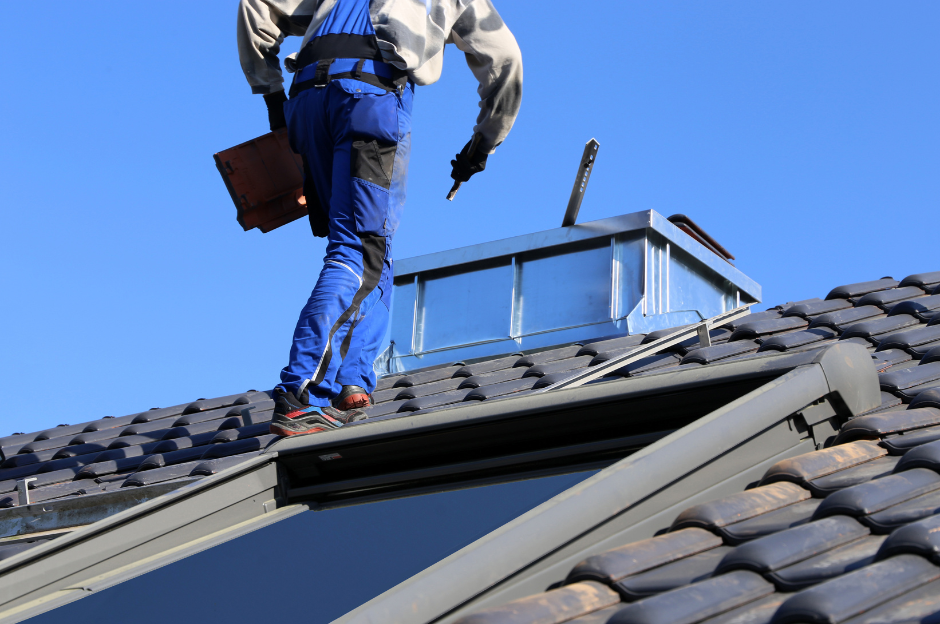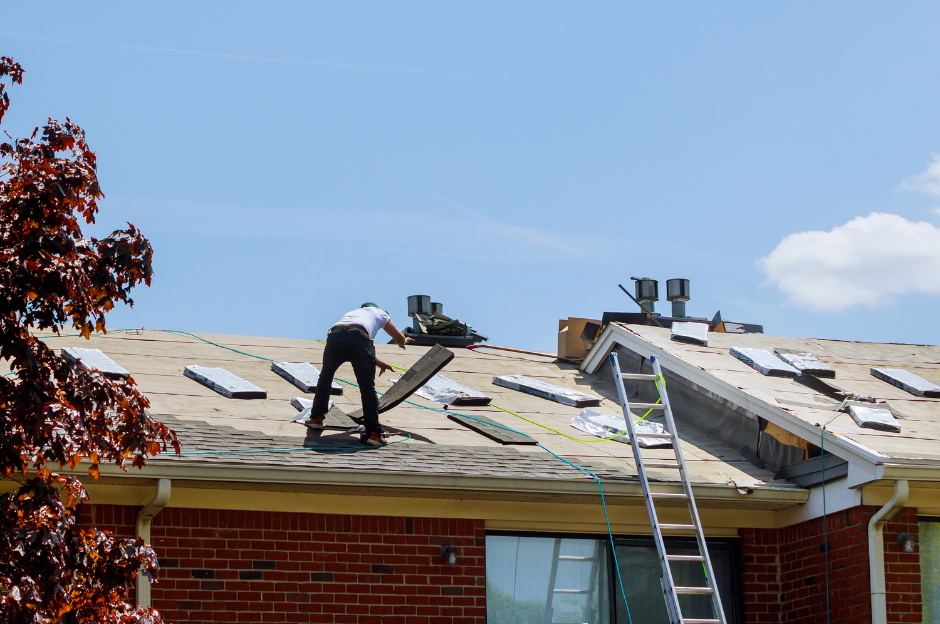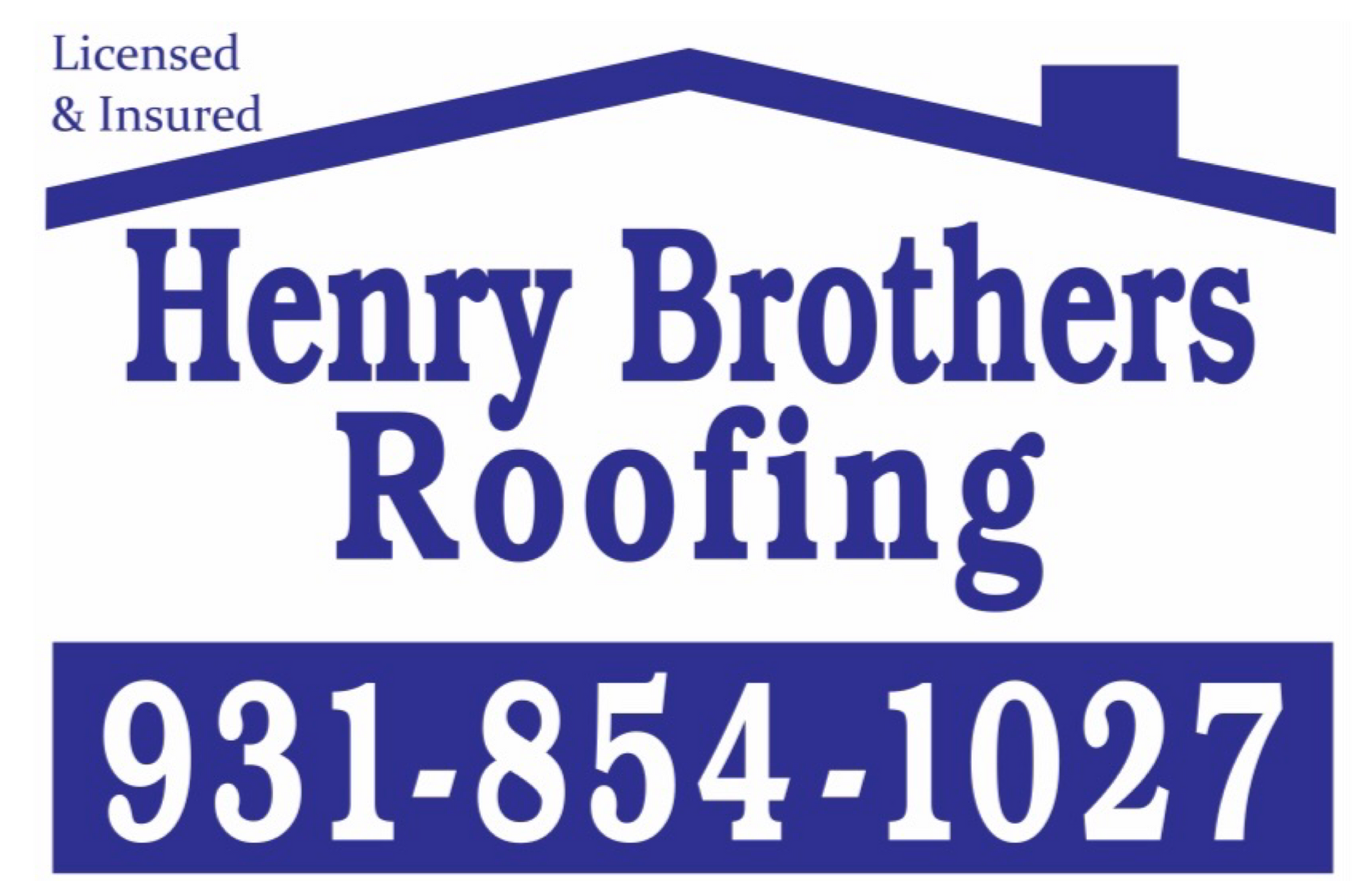Roofing Solutions for Every Budget: Top 10 Options to Protect Your Home
March 29, 2024

Your home's roof is its first line of defense against the elements, shielding you and your loved ones from rain, wind, snow, and sunlight. Whether you're building a new home or replacing an aging roof, finding the right roofing solution that fits your budget is crucial. In this comprehensive guide, we'll explore the top 10 roofing options suited for every budget, from budget-friendly choices to high-end materials, ensuring you can protect your home without breaking the bank.
Asphalt Shingles
Budget Range: $1.50 - $5.00 per square foot
Overview: Asphalt shingles are the most popular roofing material in North America, prized for their affordability, durability, and ease of installation. Available in a variety of colors and styles, asphalt shingles offer versatility and aesthetic appeal at a budget-friendly price point. While basic three-tab shingles are the most economical option, architectural shingles provide enhanced durability and visual appeal for a slightly higher cost.
Metal Roofing
Budget Range: $5.00 - $12.00 per square foot
Overview: Metal roofing has surged in popularity in recent years, thanks to its durability, longevity, and energy efficiency. While metal roofs may have a higher upfront cost compared to asphalt shingles, their superior performance and longevity make them a cost-effective investment in the long run. Options such as corrugated metal, standing seam, and metal tiles offer a variety of aesthetic choices to suit any architectural style.
Wood Shingles or Shakes
Budget Range: $6.00 - $10.00 per square foot
Overview: Wood shingles and shakes exude natural beauty and rustic charm, making them a popular choice for traditional and historic homes. While wood roofing materials require regular maintenance to prevent rot, mold, and insect damage, their timeless appeal and eco-friendly credentials make them a compelling option for homeowners seeking a distinctive look.
Synthetic Roofing Materials
Budget Range: $3.00 - $10.00 per square foot
Overview: Synthetic roofing materials, such as synthetic slate and synthetic cedar shakes, offer the aesthetic appeal of natural materials with enhanced durability and performance. Made from recycled plastics and rubber, synthetic roofing materials are lightweight, eco-friendly, and resistant to fire, impact, and weather damage. While they may have a higher upfront cost, their low maintenance requirements and long lifespan make them a cost-effective choice over time.
Clay or Concrete Tiles
Budget Range: $8.00 - $15.00 per square foot
Overview: Clay and concrete tiles are renowned for their durability, longevity, and architectural beauty, making them a popular choice for Mediterranean, Spanish, and Mission-style homes. While clay tiles tend to be more expensive than concrete tiles, both options offer excellent durability, fire resistance, and thermal performance. While the upfront cost of clay or concrete tiles may be higher, their longevity and low maintenance requirements make them a wise investment for homeowners seeking a distinctive and long-lasting roofing solution.
Slate Roofing
Budget Range: $10.00 - $20.00 per square foot
Overview: Slate roofing is synonymous with luxury, elegance, and unparalleled durability, making it the roofing material of choice for upscale homes and historic landmarks. Quarried from natural stone, slate tiles offer unmatched beauty, longevity, and resistance to fire, water, and pests. While slate roofing comes with a premium price tag, its timeless appeal and exceptional performance make it a worthwhile investment for homeowners seeking a roof that will last a lifetime.
Solar Roofing
Budget Range: $15.00 - $30.00 per square foot
Overview: Solar roofing integrates photovoltaic cells directly into the roofing material, allowing homeowners to harness the power of the sun to generate electricity and reduce their energy bills. While solar roofing systems have a higher upfront cost compared to traditional roofing materials, they offer significant long-term savings on energy costs and may qualify for tax incentives and rebates. With advancements in technology and design, solar roofing has become an increasingly popular option for eco-conscious homeowners seeking to reduce their carbon footprint and energy dependency.
Green Roofing
Budget Range: $10.00 - $25.00 per square foot
Overview: Green roofing, also known as living roofs or vegetative roofs, consists of a layer of vegetation and soil installed on top of a waterproofing membrane. Green roofs offer numerous environmental benefits, including improved air quality, reduced stormwater runoff, and enhanced energy efficiency. While the upfront cost of green roofing may be higher than traditional roofing materials, the long-term savings on energy costs and the ecological benefits make it a compelling choice for environmentally conscious homeowners.
EPDM Rubber Roofing
Budget Range: $3.00 - $8.00 per square foot
Overview: EPDM (ethylene propylene diene terpolymer) rubber roofing is a durable and cost-effective option for low-slope or flat roofs. EPDM roofing membranes are highly resistant to UV radiation, ozone, and weathering, making them ideal for harsh climates and extreme weather conditions. While EPDM roofing may have a lower upfront cost compared to other materials, its long lifespan and minimal maintenance requirements make it a cost-effective choice for commercial and residential applications.
Built-Up Roofing (BUR)
Budget Range: $5.00 - $10.00 per square foot
Overview: Built-up roofing (BUR), also known as tar and gravel roofing, consists of multiple layers of asphalt-impregnated felt or fiberglass reinforced with bitumen and topped with a layer of gravel or mineral granules. BUR roofing systems offer excellent durability, waterproofing, and fire resistance, making them a popular choice for flat and low-slope roofs. While BUR roofing may have a higher upfront cost compared to other materials, its long lifespan and proven performance make it a cost-effective option for commercial and industrial buildings.
Conclusion: Choosing the Right Roofing Solution for Your Budget
In conclusion, selecting the right roofing solution for your home or business involves balancing budgetary considerations with performance, durability, and aesthetic preferences. Whether you're looking for a budget-friendly option or a high-end material that offers unmatched beauty and longevity, there's a roofing solution available to meet your needs.
By exploring the top 10 roofing options outlined in this guide, you can make an informed decision that protects your investment, enhances your property's curb appeal, and ensures peace of mind for years to come. Remember to consult with roofing professionals to assess your specific needs and budgetary constraints, ensuring that you choose a roofing solution that provides the best value and performance for your unique situation.
Henry Brothers Blog

Multi-family buildings pose unique challenges for roofing—requiring durable, efficient, and cost-effective solutions that serve multiple households simultaneously. Selecting the right system and partner can significantly impact long-term maintenance and energy bills. Common Roofing Challenges in Multi-Family Properties Large surface areas Multiple penetrations (vents, HVAC units) Noise and disruption during installation High foot traffic for maintenance Energy efficiency Efficient Roofing Materials TPO (Thermoplastic Polyolefin): Lightweight, reflective, and energy-efficient. Ideal for flat or low-slope roofs. Modified Bitumen: Offers durability and weather resistance. Works well for larger structures. Metal Roofing: Long-lasting and low-maintenance. Higher upfront costs but excellent ROI. Asphalt Shingles: Budget-friendly and easy to repair. Better for pitched multi-family homes. Affordability Strategies Bulk Purchasing Discounts: Roofers often offer lower rates for large-scale projects. Energy Rebates and Tax Credits: Cool roofing materials may qualify for incentives. Roof Coatings: Extend lifespan and defer full replacements. Preventive Maintenance Plans: Regular inspections reduce major repair costs. Partnering with the Right Contractor Choose a roofing contractor experienced in multi-family dwellings. Look for: References from similar projects Warranty offerings Insurance and licensing Clear timelines and communication protocols

Your roof is one of the most defining features of your home’s architecture. A well-designed roof complements the style, era, and character of your house, enhancing both curb appeal and value. Whether you own a modern home, a Victorian masterpiece, or a Mediterranean villa, choosing the right roofing materials and design is essential. This article explores custom roofing solutions for different architectural styles, ensuring your roof is both aesthetic and functional. 1. Why Custom Roofing Matters A one-size-fits-all approach doesn’t work for roofing. Here's why customization is key: 🏡 Preserves Architectural Integrity The roof should match the home's era and design. A poorly chosen roof can clash with the architecture and reduce property value. 💰 Boosts Home Value & Curb Appeal A well-matched roof enhances visual appeal, making your home stand out. Homebuyers prefer houses with roofs that fit the overall design. 🌦 Enhances Durability & Efficiency Custom roofing accounts for climate, slope, and insulation. Choosing the right materials ensures longer roof life and energy efficiency. 2. Best Roofing Materials for Different Architectural Styles 🏗 Modern & Contemporary Homes Modern architecture focuses on clean lines, minimalism, and energy efficiency. Best Roofing Options: ✅ Flat Roofs – Achieve a sleek, contemporary look. ✅ Metal Roofing – Durable and complements modern aesthetics. ✅ Green Roofs – Eco-friendly and visually striking. ✅ Solar Panels – Integrate renewable energy solutions. 🏰 Victorian & Gothic Revival Homes These homes have steep-pitched roofs, turrets, and elaborate detailing. Best Roofing Options: ✅ Slate Tiles – Classic, long-lasting, and historically accurate. ✅ Wood Shingles – Adds charm and natural beauty. ✅ Decorative Metal Accents – Enhances ornate Victorian designs. 🏝 Mediterranean & Spanish-Style Homes Inspired by European coastal homes, these feature stucco walls and curved archways. Best Roofing Options: ✅ Clay or Terracotta Tiles – Traditional, weather-resistant, and elegant. ✅ Concrete Tiles – Durable and available in various textures and colors. ✅ Synthetic Spanish Tiles – Modern, lightweight alternatives with classic appeal. 🌲 Rustic & Cabin-Style Homes These homes emphasize natural materials and a cozy aesthetic. Best Roofing Options: ✅ Wood Shakes – Blends seamlessly with wooded surroundings. ✅ Metal Roofing (Rustic Finish) – Durable with a weathered, natural look. ✅ Green Roofs – Enhances sustainability and insulation. 🏡 Colonial & Traditional Homes These timeless homes focus on symmetry and classic proportions. Best Roofing Options: ✅ Asphalt Shingles – Affordable and available in classic shades. ✅ Slate Roofing – Elegant and historically accurate. ✅ Copper or Metal Accents – Enhances historic charm. 🏛 Mid-Century Modern Homes This style features low-sloped roofs, large windows, and open spaces. Best Roofing Options: ✅ Flat or Low-Slope Roofs – Clean, minimalistic aesthetic. ✅ Rubber or Membrane Roofing – Ideal for low-pitch roofs. ✅ Green or Living Roofs – Complements eco-conscious designs. 🏰 Tudor-Style Homes Tudor homes have steeply pitched gables and decorative half-timbering. Best Roofing Options: ✅ Wood or Synthetic Shake Shingles – Traditional and authentic. ✅ Slate Roofing – Enhances historic charm and durability. ✅ Architectural Asphalt Shingles – Mimics wood or slate at a lower cost. 3. Custom Roofing Features to Consider Beyond materials, adding customized elements can elevate your roof’s design. 🔹 Roof Color & Texture Dark roofs enhance historic and formal homes. Light-colored roofs reflect heat, ideal for warm climates. Textured materials (slate, shakes) add visual depth. 🏠 Roof Shape & Pitch Steep roofs fit Gothic and Victorian styles. Flat or low-sloped roofs match modern homes. Custom pitches enhance energy efficiency and durability. 🔆 Skylights & Roof Windows Adds natural light and enhances ventilation. Works well in modern, contemporary, and rustic homes. 🌞 Solar Roofing & Smart Technology Solar shingles blend seamlessly into modern & eco-friendly homes. Smart roofing systems adjust ventilation & insulation automatically. 4. Custom Roofing: How to Get Started 1️⃣ Consult a Roofing Expert Work with an architect or contractor specializing in custom roofs. Ensure they understand historical accuracy and climate considerations. 2️⃣ Choose High-Quality Materials Invest in durability, energy efficiency, and aesthetics. Select roofing that aligns with your home’s style and longevity needs. 3️⃣ Consider Long-Term Costs & ROI Some materials have higher upfront costs but last longer and increase home value. Energy-efficient options can reduce heating and cooling expenses. 4️⃣ Verify Local Building Codes Some roofing styles require special permits. Ensure compliance with HOA guidelines and historical district regulations.


